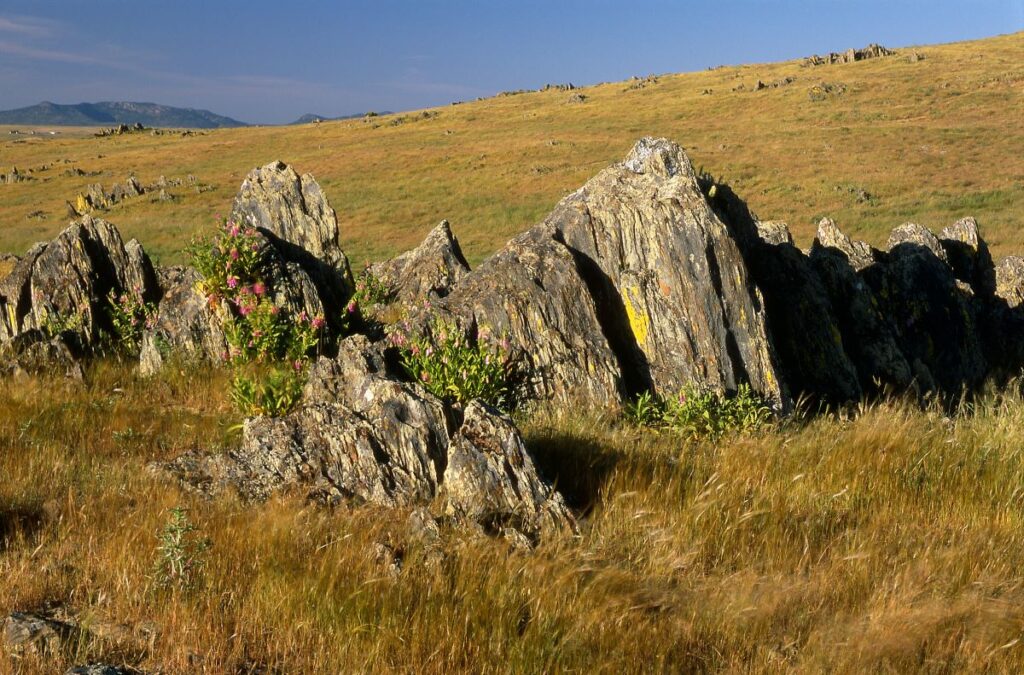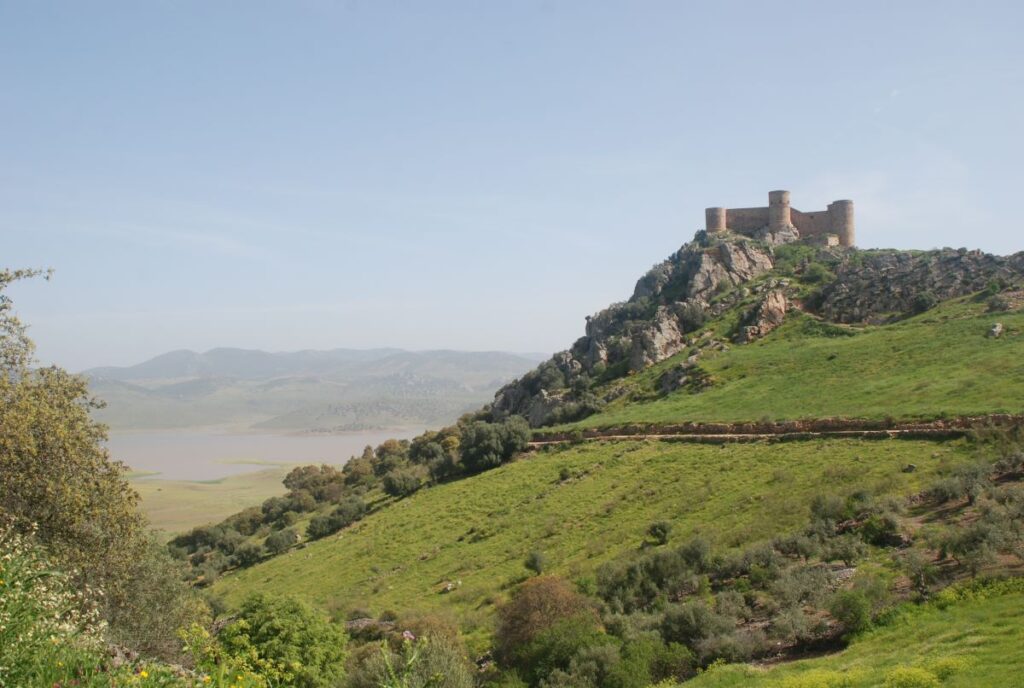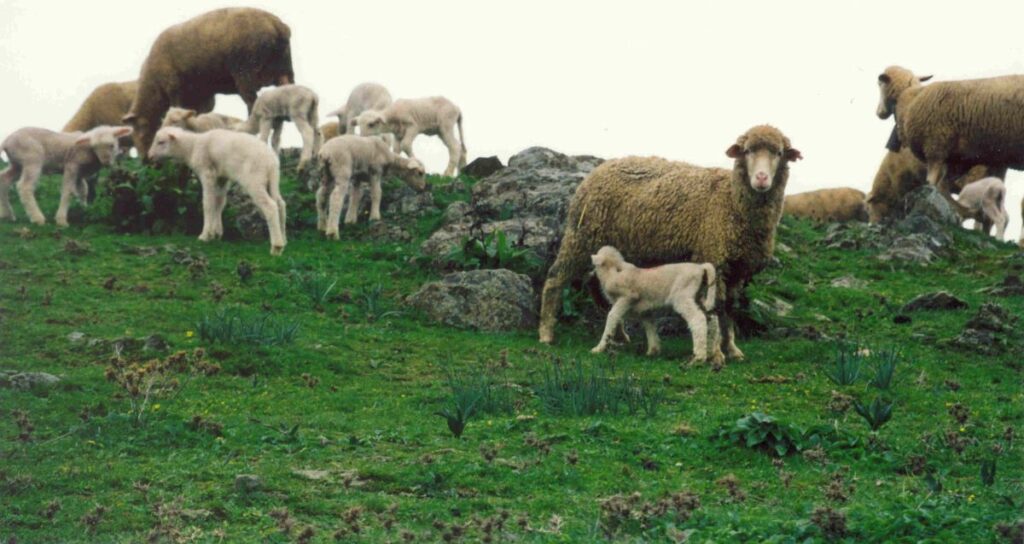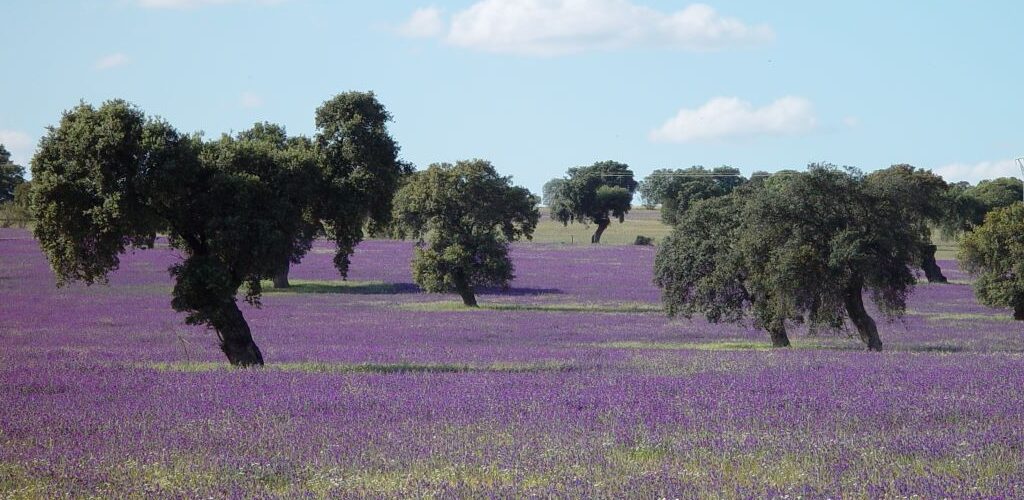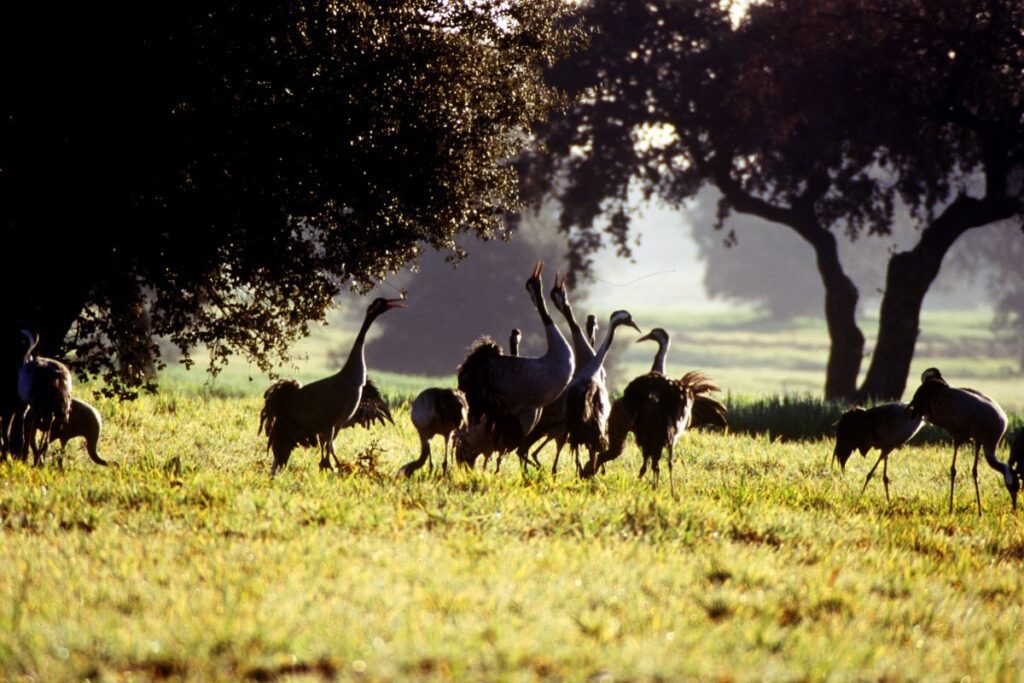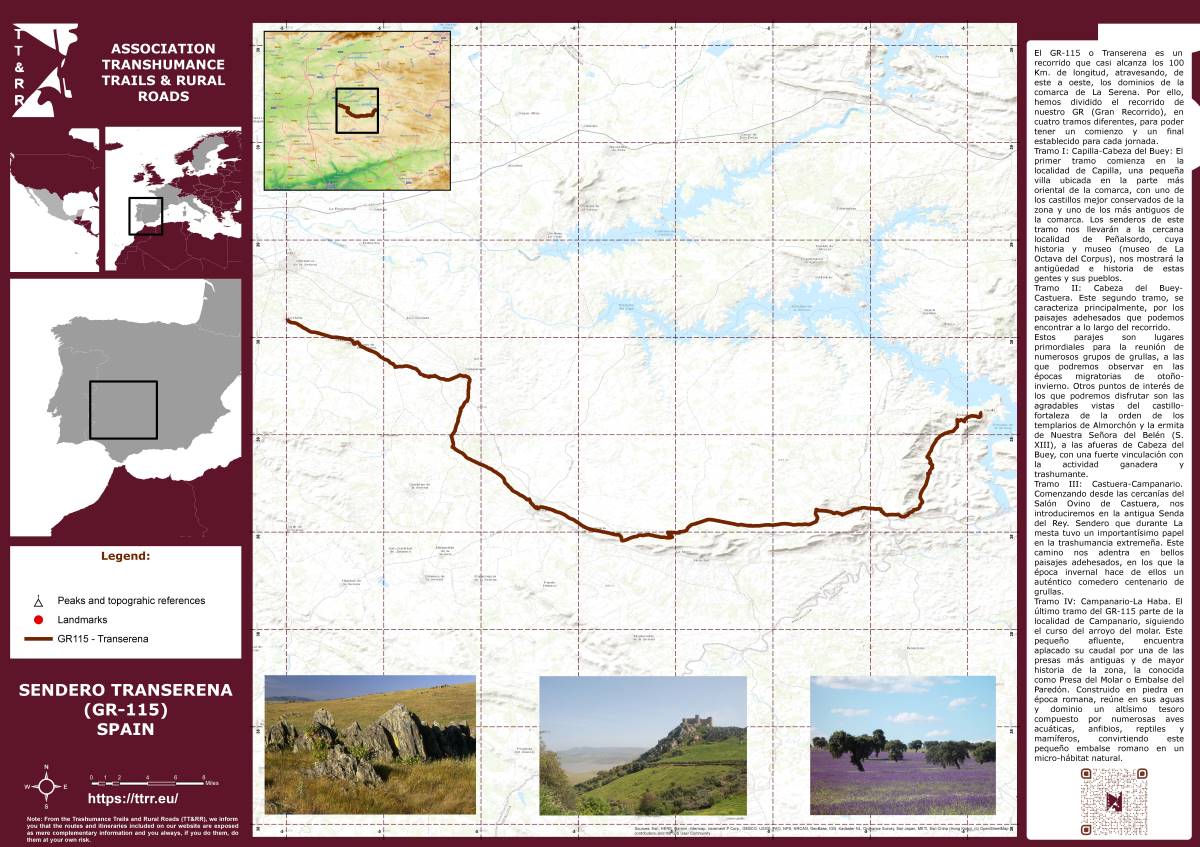RUTA TRANSERENA
Photo Gallery
Description
Map
DESCRIPTION
The GR-115 or Transerena is a route almost 100 kilometers (62 miles) long, which crosses the domains of the La Serena region, from east to west. For this reason, we have divided the route of our GR (Grand Tour) into four different sections, to establish a daily beginning and end.
Tramo I: Capilla-Cabeza del Buey
El primer tramo comienza en la localidad de Capilla, una pequeña villa ubicada en la parte más oriental de la comarca, con uno de los castillos mejor conservados de la zona y uno de los más antiguos de la comarca. Los senderos de este tramo nos llevarán a la cercana localidad de Peñalsordo, cuya historia y museo (museo de La Octava del Corpus), nos mostrará la antigüedad e historia de estas gentes y sus pueblos.
El terreno abrupto de las sierras de Capilla, Torozo y la sierra de Las Cabras, serán los trazados más fatigosos de la Transerena, aunque sin duda los de mayor biodiversidad. Entre las especies avícolas podremos observar grullas, buitres leonados, cernícalos y el aguilucho cenizo.
Una vez lleguemos a la Sierra de Las Cabras, dirección Cabeza del Buey, será allí donde disfrutemos de las mejore vistas y paisajes del recorrido, ya que la altura y la vegetación se fusionan con el resto de la naturaleza para formar paisajes imposibles repletos de vida e historia.
Tramo II: Cabeza del Buey-Castuera
Este segundo tramo, se caracteriza principalmente, por los paisajes adehesados que podemos encontrar a lo largo del recorrido.
Estos parajes son lugares primordiales para la reunión de numerosos grupos de grullas, a las que podremos observar en las épocas migratorias de otoño-invierno. Otros puntos de interés de los que podremos disfrutar son las agradables vistas del castillo-fortaleza de la orden de los templarios de Almorchón y la ermita de Nuestra Señora del Belén (S. XIII), a las afueras de Cabeza del Buey, con una fuerte vinculación con la actividad ganadera y trashumante.
El último recorrido de este segundo tramo de la Transerena, trascurre por la sierra de Benquerencia de la Serena y Castuera. Podremos disfrutar de sus escarpadas sierras y una riqueza floral y faunística muy variada, siendo este un abrigo natural en el que podremos encontrar jabalíes, buitres y un sin fin de especies animales que conviven en las cercanías del castillo de Benquerencia.
Tramo III: Castuera-Campanario
Comenzando desde las cercanías del Salón Ovino de Castuera, nos introduciremos en la antigua Senda del Rey. Sendero que durante La mesta tuvo un importantísimo papel en la trashumancia extremeña. Este camino nos adentra en bellos paisajes adehesados, en los que la época invernal hace de ellos un auténtico comedero centenario de grullas.
Estos parajes coinciden con la conocida finca de Badija, que nos conducirá hacia zonas de dehesas más desarboladas, aunque llenas de vida. Las retamas y pastizales dan cobijo a innumerables especies animales, como sisones, grullas, avefrías, conejos, liebres, y un sinfín de especies vegetales. Pasados estos singulares paisajes, llegaremos a la localidad de Campanario, donde finaliza este tercer tramo de la Transerena.
Tramo IV: Campanario-La Haba
El último tramo del GR-115 parte de la localidad de Campanario, siguiendo el curso del arroyo del molar. Este pequeño afluente, encuentra aplacado su caudal por una de las presas más antiguas y de mayor historia de la zona, la conocida como Presa del Molar o Embalse del Paredón. Construido en piedra en época romana, reúne en sus aguas y dominio un altísimo tesoro compuesto por numerosas aves acuáticas, anfibios, reptiles y mamíferos, convirtiendo este pequeño embalse romano en un micro-hábitat natural.
Más adelante y, todavía dentro de la localidad de Campanario, llegaremos hasta el Yacimiento de La Mata, en el que podremos observar un edificio protohistórico del s. VI a. C. Una vez retomemos nuestro destino, dirección a la Villa de Magacela, pasaremos por terrenos de antiguas minas durante un largo trayecto a ambos lados del camino.
Con la llegada al municipio de Magacela, la historia nos atraerá dentro y fuera de la localidad a conocer las raíces de la villa, desde tiempos inmemorables. El barrio Judío, el Castillo Medieval, las Pinturas Rupestres y el Dolmen, harán de nuestra estancia en la localidad un lugar idílico de cultura e historia viva. El último trayecto lo realizaremos por la carretera que une la villa de Magacela con la localidad de La Haba, donde a las puertas de su ayuntamiento pondremos punto y final a la Transerena.

